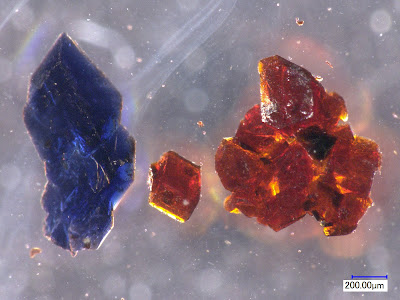
|
|
Two Crystals: Both alike in conformation in fair PNNL, where we lay our scene Image Credit: PNNL |
Published recently in the chemistry journal Angewandte Chemie International (a journal that until 6 months ago I couldn't even pretend to know how to pronounce) is the paper "Isolation of Two Agostic Isomers of an Organometallic Cation: Different Structures and Colors", in which Bullock et al. report a system with some very interesting chemistry.
Before reading this article I hadn't heard of agostic interactions (or I had heard and promptly forgotten), but they really are my kind of chemistry. I love weak interactions. An agostic interaction is one in which a caron-hydrogen bond interacts with a transition metal. These interactions are very weak (<15 kcal/mol), and that's really what makes this paper so surprising to me.
The isolation of two different isomers whose crystals are different colors isn't anything new. We've known for a long time that transition metals create some interesting color varieties. What's interesting in this paper is how such a small change can create such a large difference. The two conformations are very similar - the only difference being a C-C rotation and a different hydrogen forming the agostic interaction.

|
| The difference is highlighted in red. It's not much, really. Image Credit: Cited paper |
Computationally (DFT) the energy differnece between these two conformations is only 0.6 kcal/mol, an extremely small amount. It's enough, however, to produce a very different color. The small change in conformation produces a much larger change in the HOMO/LUMO transition. To me the interesting chemistry here isn't that a violet solution precipitates out both blue and orange crystals (but again, color changes are neat). The interesting chemistry is that very, very subtle changes in this system's conformation lead to such distinct color differences. Colors that are actually at the opposite ends of the visible spectrum.
The work in this paper seems very well done. DFT calculations (including HOMO/LUMO analysis), X-ray crystallography, and IR spectra all agree with the conclusion that this simple bond rotation creates such a stark difference in the properties of these crystals.
